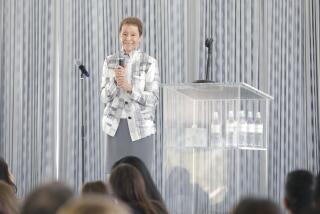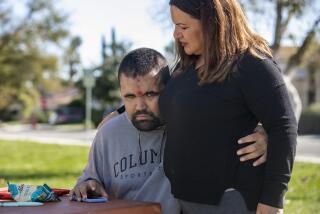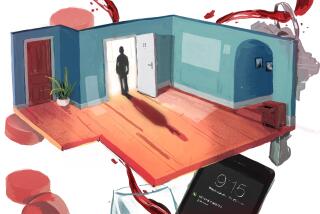BOOK REVIEW / NONFICTION : ...
“I never did it, and I’ll never do it again,” said one of Donald Dutton’s patients in his pioneering treatment group for batterers, unwittingly revealing perhaps the first of the many hurdles between the batterer and selfhood. In fact, the most dangerous batterers, according to Dutton, are the ones who never cross this hurdle, the “vagal reactors” who become almost calm in the vortex of violence, and who do not admit to doing anything wrong.
Dutton, who testified on behalf of the prosecution as an expert witness on wife assault in the O. J. Simpson murder trial, established his group therapy treatment program for batterers in 1978. He has, 17 years and 600 men later, developed a portrait of a batterer as well as several theories on the roots of abusive behavior.
First of all, the abuser needs his assaultiveness to make him feel whole. This personality has its roots, according to Dutton, in the “shaming and violent behavior” of the father, as well as the detached, emotionally unavailable behavior of the mother. Women subsequently become “lightning rods” for the emotional turmoil in a batterer’s life; intimacy is linked to anger, disproportionate rage, and abuse.
Batterers almost always display two faces: the public, usually charming personality, and the private, unpredictable personality. Women repeatedly described cycles of abuse to Dutton: a buildup of tension and an abusive release. Particularly dangerous times are typically when the woman “separates, when she seeks shelter, and when she becomes pregnant.” A woman is frequently put in a double bind: If she tries to respond to a verbal harangue, the batterer “becomes angrier with what she says. If she is quiet, her withdrawal enrages him.”
Unlike other theorists who blame abusive behavior on socialization--”male expectations of privilege and power,” Dutton feels that there are too many men who grow up in the same culture who are not abusive. “For some men,” he writes, “to be in an intimate relationship at all inevitably generates fear, shame and rejection--and anger as a cover.”
“No Visible Wounds” focuses on the emotional abuse of women, and on the abusers, including chapters on “Profile of an Abuser,” “The Reasons a Woman Stays With an Abuser,” “The Court Response to Abuse,” “Building a New Life” and “Treatment for Abusers.” Mary Susan Miller cites the following figures in the book’s introduction: “FBI figures indicate a woman is beaten every 15 seconds; up to 4,000 women are beaten to death annually by a family member; in half of all marriages there is at least one violent incident, in almost a third the violence is severe.”
“No Visible Wounds” is by far, perhaps because of the writing style and the nature of the case studies, the more heart-wrenching of the two books. Women who stay in emotionally abusive relationships, in spite of having to beg for sex, money, attention and affection their whole lives, seem stuck in a way that is similar to, but more insidious than, victims of physical abuse.
The profiles of abusers share many characteristics: As Miller puts it, they are often socially withdrawn; they are outwardly charming but “unable to handle rejection” or criticism; “they demand strict adherence to rules and . . . mete out punishment to those who break them”; they exhibit “a Dr. Jekyll--Mr. Hyde pattern,” and they control through threats. If anything, the emotional batterers seem more in control on the whole, less tightly wound, allowing them, perhaps, to hold the reins for decades without the violent outbursts typical of physical batterers. Women, in both cases, get all the rage the abuser could not express toward his parents.
Women who leave, writes Miller, go through the stages of anger, shame, guilt and finally, sorrow. “Maybe,” she writes, “the abused woman should give up the idea of discovering what love is and define it by discovering what love isn’t.”
More to Read
Sign up for our Book Club newsletter
Get the latest news, events and more from the Los Angeles Times Book Club, and help us get L.A. reading and talking.
You may occasionally receive promotional content from the Los Angeles Times.








